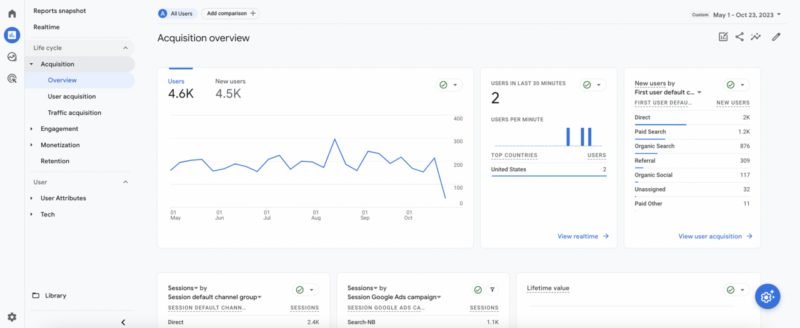Making the Change from Google UA to GA4

Google recently announced that it is transitioning from its Universal Analytics (UA) platform to the new Google Analytics 4 (GA4). UA will stop processing new data beginning July 1, 2023. All sites using UA will be impacted by this update and need to switch over to GA4. This is a big shift for the analytics space, and all website owners and CMOs need to know when, why, and how to make this change. So, let’s dive in and get you up to speed on what you need to do!
Why Did Google Do This?
Google made this change because they wanted to provide website owners with more accurate data about their visitors. With the new GA4 platform, users will be able to track user engagement more accurately across devices and platforms. Additionally, GA4 will give users better insights into how their visitors are interacting with their content through machine learning-based analysis of user behavior. In other words, GA4 is designed to help website owners better understand their customers so they can create a more personalized experience for them.
What’s Different?
The biggest difference between UA and GA4 is that the latter takes a more holistic approach to measuring user engagement. While UA tracked pageviews and other metrics like time on page and bounce rate, GA4 actually looks at how users interact with your content over time, including across different devices and platforms. It also uses machine learning algorithms to gain insights into how users are engaging with your content so you can tailor your strategy accordingly.
Why Is It Important?
Making the switch from UA to GA4 is important because it allows website owners to have a better understanding of their visitors’ behaviors. By having access to comprehensive data about these behaviors, website owners can create more personalized experiences for their visitors that ultimately lead them down the conversion path faster and easier than ever before. Additionally, using AI-driven analysis from GA4 can help website owners identify trends in customer behavior so they can adjust their strategies accordingly without having to waste time manually analyzing data or manually segmenting visitors into different groups.
How Do I Make The Change?
Making the switch from UA to GA4 isn’t difficult but it does require some planning ahead of time in order for it to go smoothly. While Google offers an auto-update feature, not all UA configurations have an obvious GA4 counterpart. We strongly encourage you to manually migrate to GA4 for several reasons:
- Offers more control and customization over the process to fit your specific business needs
- Ensures the transition is seamless and nothing falls through the cracks
- Reduces data discrepancies to ensure historical continuity of data and accurate mapping of metrics
- Facilitates a successful migration of goals, views, reports, etc. to preserve data and align future data collection and reporting with your business goals
And Google agrees!:
“We strongly recommend you manually migrate your Universal Analytics settings to GA4. If you do nothing, a new GA4 property will automatically be created for you, and your Universal Analytics configurations will be copied to the new GA4 property. Not all UA configurations have an obvious GA4 counterpart, and the automated process might not make the same choices as you would.” – Google
How can Morrison help?
Our team has supported several clients with the UA to GA4 transition already, and we can facilitate your transition depending on your specific needs, which may include:
- Complete implementation support
- Strategic recommendations
- Training to understand the changes and new interface.
If you would like to discuss further or if you have any questions, let’s schedule some time to chat!
Want to learn more?
Morrison is a full-service agency offering expertise in every discipline. Whether you need help on a project basis or a dedicated Agency of Record, we are equipped to tackle any marketing challenge you may face.
Get In Touch

